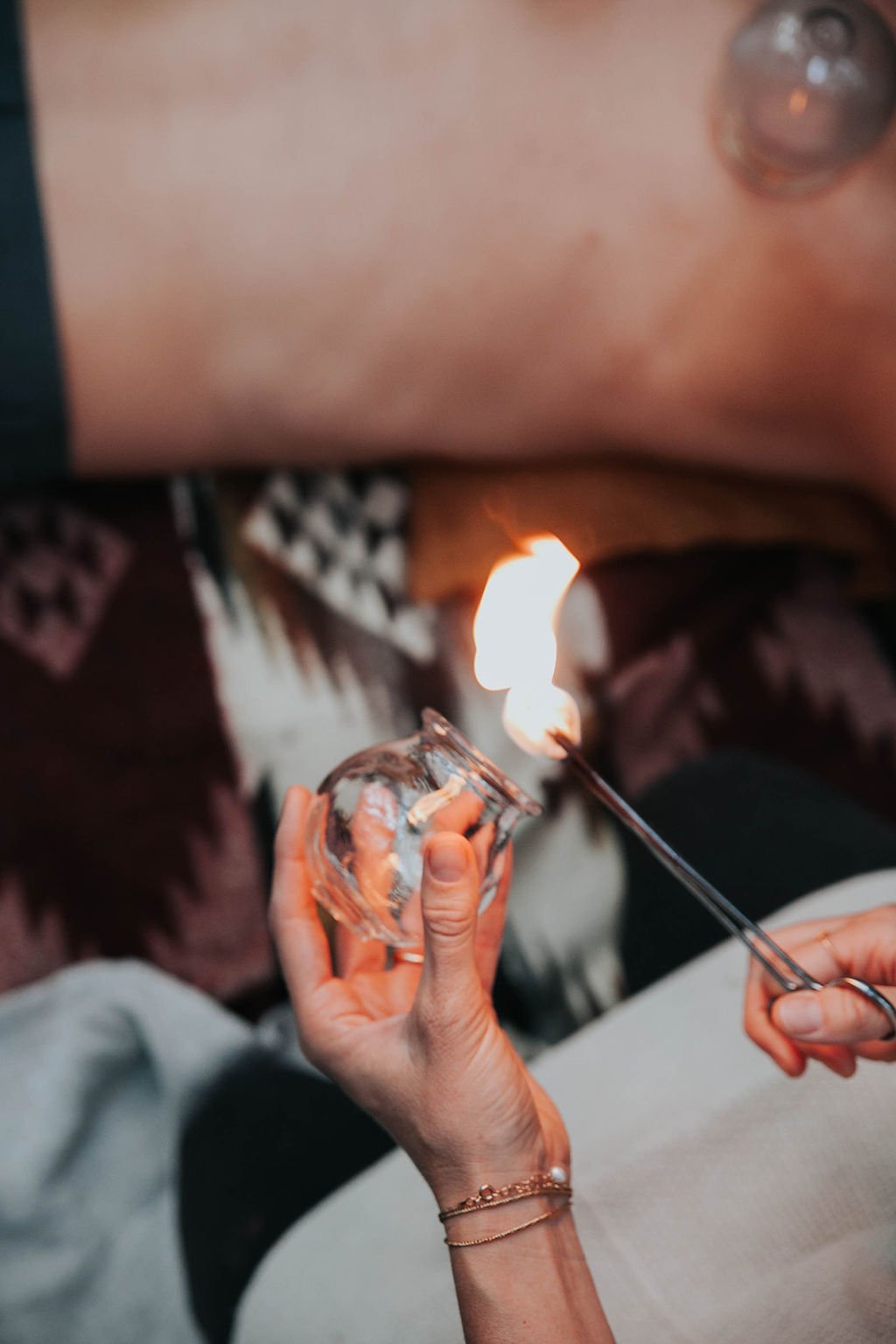Introduction to cupping
WHAT IS Cupping?
Often used in addition to other treatments, cupping works well in combination with acupuncture. Cupping is often used prior to needling or after needling to help open up the channels, relieve muscle tension, and increase circulation in areas of blockage and tension. Bruising is often left behind after cupping as it brings to the surface stagnated (‘stuck’) circulation in tense muscles, allowing for fresh blood to flow to enter the area that was cupped. The bruising is not sore to the touch, as it often feels like a big relief of tension in the area that was treated.
HOW DOES Cupping WORK?
As a form of myofascial decompression, cupping helps to decompress your muscles and fascial tissue, creating space for increased blood flow and healing. The strength of the suction breaks up stagnated blood that is no longer flowing properly due to present and prolonged tension. By breaking up the stagnation or tension, it creates space for proper blood flow to re-enter the affected area, helping ease symptoms of pain, tension, and discomfort.
DOES IT HURT?
Cupping can feel quite different, as we are used to compression treatments like massage rather than decompression treatments. However, for many people cupping becomes a favourite treatment once the sensation becomes more familiar. Slight soreness can happen, depending on the amount of tension that was present, and how strongly the cups were used. In my practice, cupping is always used according to your comfort level.
WHAT CAN Cupping TREAT?
Cupping can be used to treat:
Tension
Muscular pain
TMJ
Sore back
Cough/allergies
Overall stress
ready to book your session?
If it’s your first time working with me, please fill out this new client inquiry form to get started.
Returning clients can book their session here.



